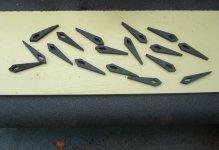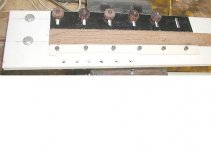Prep-Sol
Someone asked earlier about it. It is a Dupont product, sold in qts and gal cans. Buy it anywhere that sells Dupont Auto Body paints. If a NAPA dealer is handier you can use their equivalent: Fin-L Wash, also available in those same sizes. I used to use both back when I painted cars for a living, and they seemed equal in quality. They also help to remove any silicone contamination that might occur.
Good posts in this thread guys !
Someone asked earlier about it. It is a Dupont product, sold in qts and gal cans. Buy it anywhere that sells Dupont Auto Body paints. If a NAPA dealer is handier you can use their equivalent: Fin-L Wash, also available in those same sizes. I used to use both back when I painted cars for a living, and they seemed equal in quality. They also help to remove any silicone contamination that might occur.
Good posts in this thread guys !

